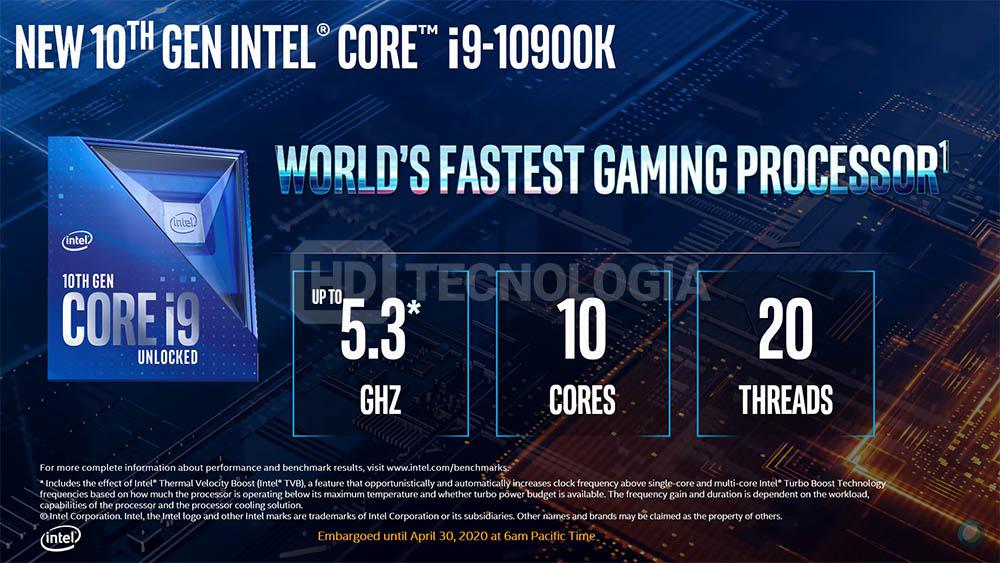As Intel releases 18 desktop Core chips (and 7 others) on Tuesday, the company also answers a question that arose when it debuted its 9th-generation desktop Core microprocessors in October. The question was whether Intel was holding back hyperthreading as a premium feature. That, unfortunately, appears to be true.
Just two of the new desktop “Coffee Lake” Core chips Intel announced on Tuesday contain hyperthreading capabilities. Several carry an “F”-series suffix, which means they forego integrated graphics and probably aren’t worth your money. All support Optane Memory.
Intel announced twenty-five new processors total: the Core chips, including a new 35-watt T-series lineup, as well as seven new Pentium Gold chips and Celeron processors. Prices range from $122 on the low end of the Core chips, up to $439.
What this means for you: Expect to see these chips in bread-and-butter mainstream PCs, rather than high-end gaming or content creation rigs. If there’s a saving grace, it’s that Intel has brought its turbo boost overclocking capabilities to its entire range of Core chips, including, for the first time, the Core i3.
Hyperthreading: Just for content creators?
To put the new batch of chips in context, remember that Intel announced its Core X series last fall, aimed at creators. Those premium chips soared to almost $2,000 in price, and they offered hyperthreading: the ability of a chip to run two instruction threads in parallel for any one CPU core. Intel’s K-series chips are designed more for the mainstream enthusiast. Last year, Anand Srivatsa, vice president and general manager in the Client Computing Group at Intel, called the Core i9-9900K “the best gaming processor in the world, period.”

But the Core i9-9900K (read PCWorld’s review) was an unlocked, 8-core/16-thread processor with hyperthreading. Only two of the new Core chips feature hyperthreading: the $439 3.1GHz (5GHz turbo) 8 core/16 thread Core i9-9900, and the $439 2.1GHz (4.4GHz turbo) 8-core/16-thread Core i9-9900T.
Within the new chips, keep an eye out for small catches. In addition to the graphics-less chips designated with an “F” suffix and the lack of hyperthreading, for instance, the new Core i9-9900’s turbo frequency number is based on the combined turbo frequency, plus what Intel calls “Thermal Velocity Boost,” which “opportunistically and automatically increases clock frequency above single-core and multi-core Intel Turbo Boost Technology frequencies based on how much the processor is operating below its maximum temperature and whether turbo power budget is available.” In other words, a Core i9-9900 may boost to 5GHz, but it might not be for as long as a true Core i9-9900K.
Intel’s 9th-gen Core chips
We’ve summarized Intel’s new Core desktop chips, below, and included Intel’s own summary if you want to dive deeper into details like cache size. (We’ve included all of Intel’s new 9th-gen Core parts. The new releases are highlighted in yellow.)
Note that all of Intel’s new 9th-gen desktop Core chips support 40 platform PCIe lanes and two channels of DDR4-2666 memory. Note that all of these are 65W parts, with a couple of exceptions: the Core i3-9350KF is 91 watts, and both the Core i3-9320 and i3-9300 are 62W, not 65W, parts.
Intel’s T-series Core chips
Intel’s new T-series chips don’t run as fast as Intel’s more mainstream Core chips. Their lower wattage (35 watts) means they’ll consume less power, so you’ll have a wider variety of coolers to choose from. They’re not unlocked, however, which means they won’t carry the potential for overclocking like some of the more mainstream Core chips do. Remember, only the fastest Core i9-9900T includes hyperthreading support.
Intel has seven new T-series chips from which to choose:
Intel’s Pentium Gold and Celeron chips
Finally, we have the Intel Pentium Gold and Celeron chips, which typically appear in slim tablets like the Microsoft Surface Go. None supports any boost capability. Somewhat ironically, however, several include hyperthreading capabilities.
Intel’s new Pentium Gold chips include:
AMD: Waiting in the wings
All this means that if you want a hyperthreading-capable chip from Intel, you have only a few from which to choose: Intel’s X-series, the Intel i9-9900K, i9-9900KF, i9-9900, and i9-9900T; plus a handful of Pentium Gold chips on the desktop. All of Intel’s new 9th-gen mobile processors include hyperthreading, too.
Hyperthreading’s absence from these new desktop chips is a disappointment from the company that basically invented the term. Intel didn’t announce anything faster than what the company showed off last October.
AMD, meanwhile, is already prepping its third-generation Ryzen processors, which AMD showed off at CES in January. There, in a comparison against the Core i9-9900K, using the new 8-core, 16-thread Ryzen (but not at the final shipping frequency), AMD performed a live Cinebench test onstage, and beat Intel’s chip. Remember, too, that AMD has been the core champion over recent years, having already announced a 32-core Threadripper 2 chip.
Intel’s traditionally dominated the PC market, and its X-series processors are certainly impressive. But AMD’s never been afraid to price its processors competitively. Intel’s played its cards, but we’re confident in expecting AMD to show a strong hand.









